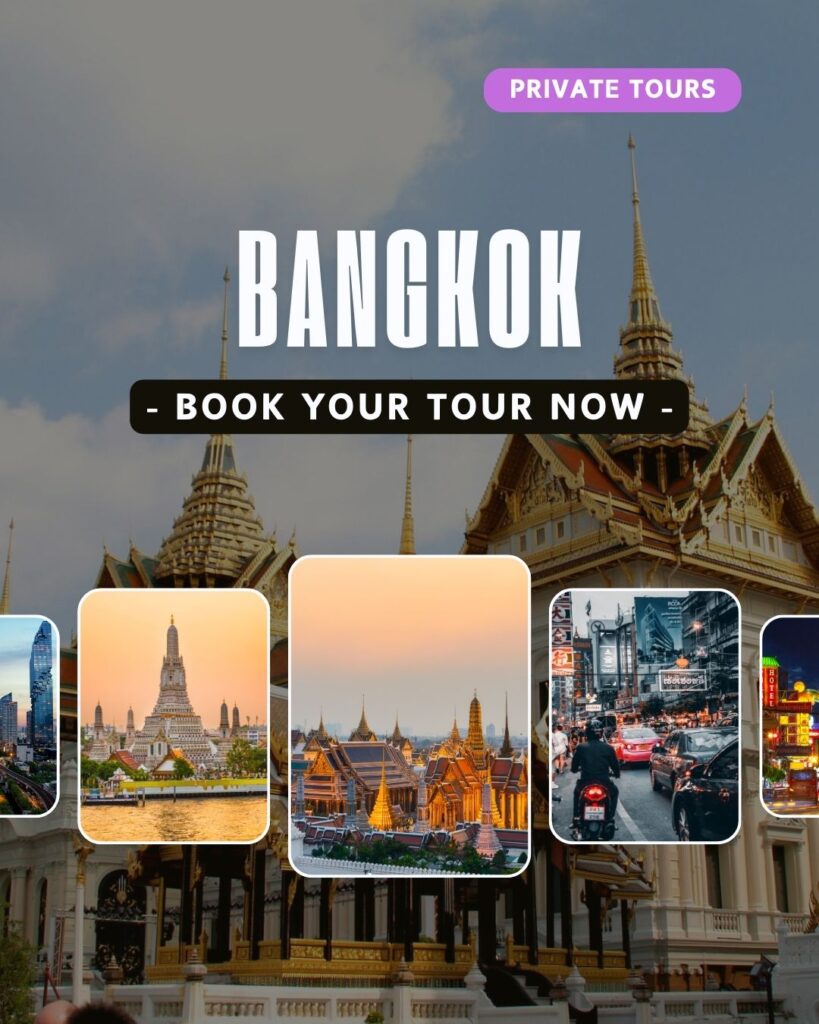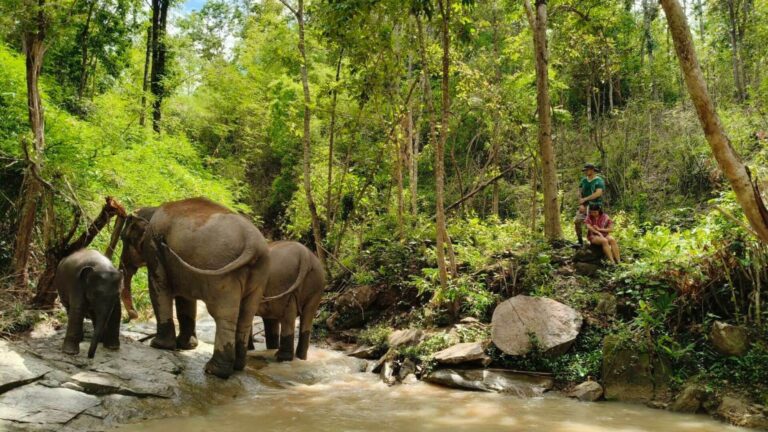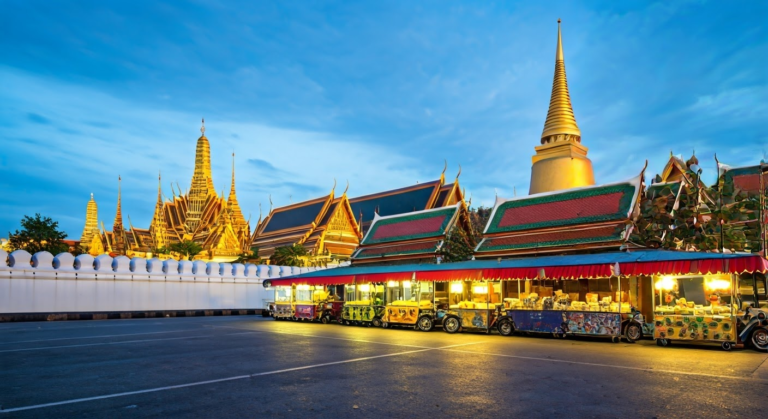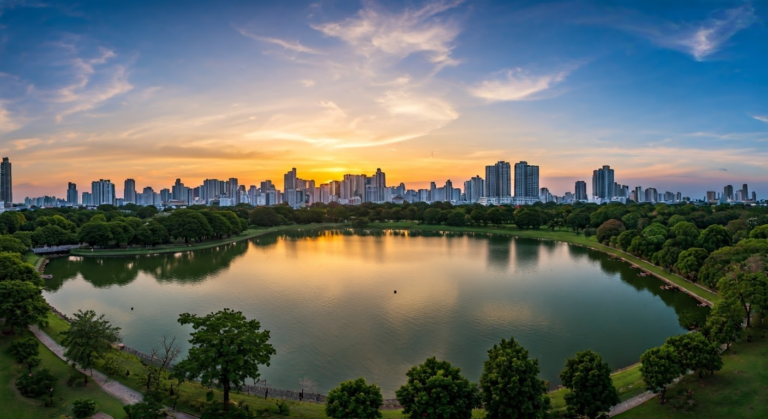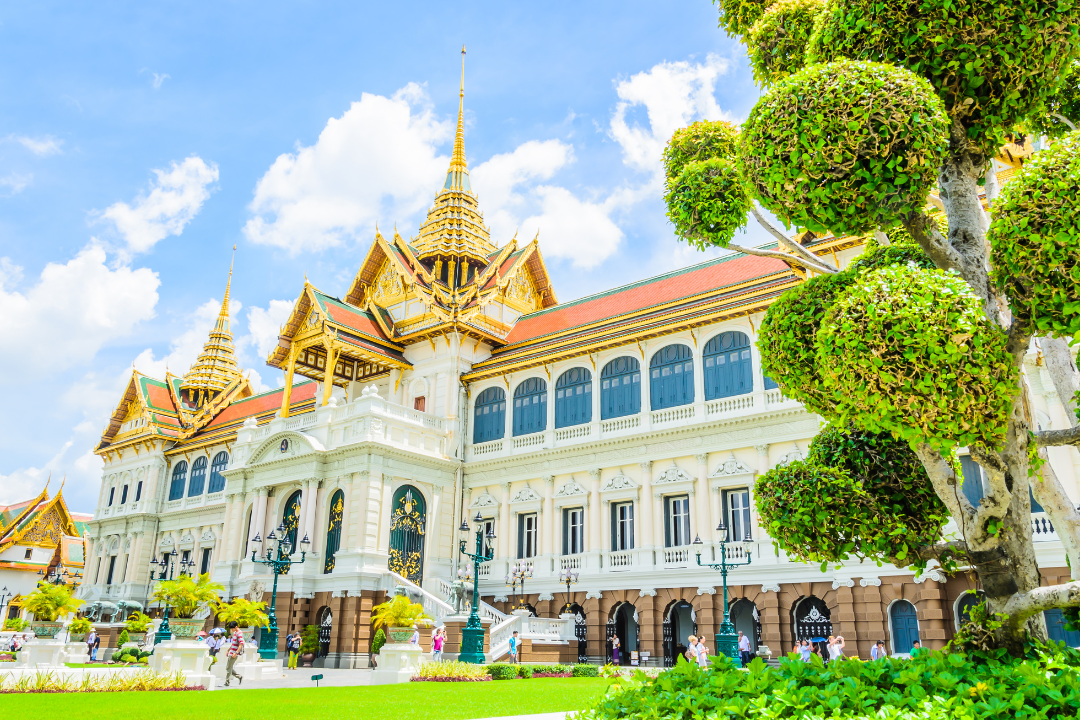
The Grand Palace is stunning—but it can get overwhelming.
We offer private, customizable tours with a local guide who’ll handle everything: tickets, dress code, crowds, and hidden gems nearby.
See the Grand Palace the smart, stress-free way.
→ Message us on WhatsApp to plan your perfect tour
Key Highlights
- Visit the beautiful Grand Palace. It shows the amazing Thai design and style. This place was once the home of Thai Kings.
- See the stunning Wat Phra Kaew. It holds the famous Emerald Buddha, a sacred symbol for Thailand.
- Stroll around the lovely area. You can discover detailed buildings, beautiful murals, and shining statues.
- Dive into the rich history of the Thai royal family. Experience the grand royal ceremonies and traditions.
- Make sure to hear the interesting stories behind the fine details and symbols that are all over the palace grounds.
Introduction
The Grand Palace is a stunning landmark in the heart of Bangkok. It gives a great look at Thailand’s rich culture. This large complex has beautiful temples, fancy designs, and important royal halls.
For many years, it has been the official home for the Kings of Thailand. Now, the Grand Palace is open to the public. Visitors are welcome to enjoy its amazing architecture and important history.
Understanding the Grand Palace’s Historical Significance
The Grand Palace was built in 1782 by King Rama I. He was the founder of the Chakri Dynasty. The Grand Palace became the main political and spiritual center of the kingdom. It served as the official home for the Thai monarchy.
Over the years, the Grand Palace has seen many important events. These include royal ceremonies and coronations.
Now, the Grand Palace is no longer the home of the King of Thailand. But it is still a respected place. It shows the rich history of Thailand.
The foundation and royal legacy
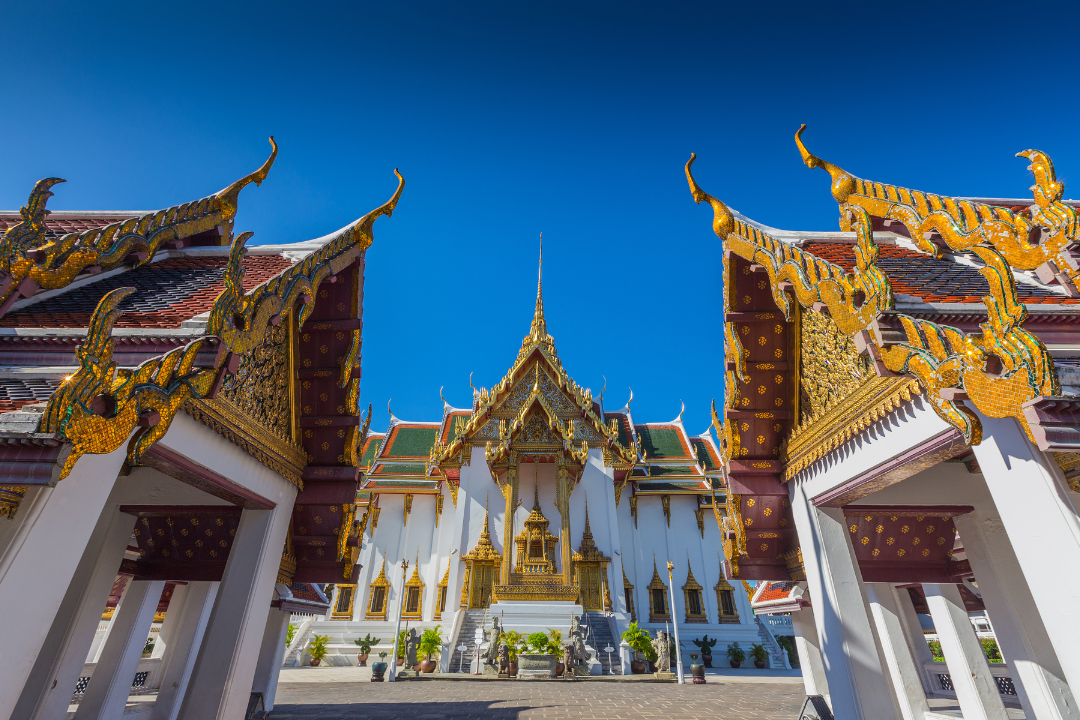
The construction of the Grand Palace began in 1782 when King Rama I founded the Rattanakosin Kingdom, designating Bangkok as the new capital of Thailand after the fall of the old capital city of Ayutthaya.
The choice of Bangkok was strategic, offering a more defendable location along the Chao Phraya River. King Rama I envisioned the Grand Palace as a grand royal residence, political center, and religious hub.
While initially modest in scope, the palace has since been expanded and transformed by successive monarchs to its present form, a sprawling testament to Thailand’s unique blend of traditional Thai culture and external influences.
Each reign of the King from Rama I to the present monarch has left its mark on the Grand Palace’s evolving structure.
Under King Rama V, significant modernization efforts incorporated European architectural elements, reflecting the king’s diplomatic relations with the West and desire for a modernized nation.
This legacy of royal vision continued with King Ananda Mahidol (Rama VIII) and King Bhumibol Adulyadej (Rama IX), who further adapted the palace’s layout and function to align with changing times.
The organic development of the palace reflects Thailand’s adaptability and respect for tradition, making the Grand Palace not only a historical site but also a living symbol of the nation’s resilience and cultural heritage.
Architectural marvels through the ages
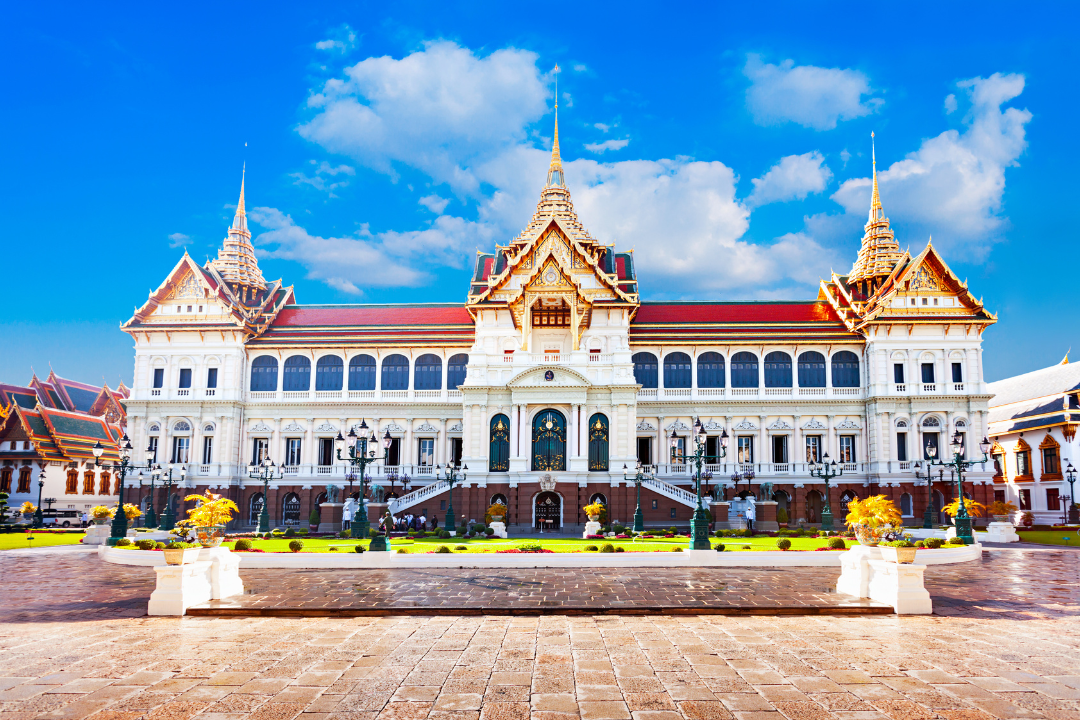
The Grand Palace is a showcase of Thai craftsmanship, from the wooden structures of its early days to the intricately carved stone and gold decorations seen today.
The palace’s architecture follows traditional Thai principles, with high-pointed roofs, colorful mosaics, and golden spires. Each building, corridor, and courtyard tells a story through detailed art, sculpture, and historical symbolism.
The influence of European architecture, particularly visible in structures built during the reign of King Rama V, reflects Thailand’s engagement with the Western world during the late 19th century.
The Chakri Maha Prasat Throne Hall, for example, combines traditional Thai roofing with a European-style building structure, highlighting a unique architectural fusion rarely seen elsewhere.
These royal halls and throne rooms, used in the past for state functions, remain integral to the palace’s grandeur and charm.
Visiting the Grand Palace?
Do it the easy way—with a private guide who knows the ropes.
→ Book on WhatsApp
Navigating the Grand Palace Complex
The Grand Palace complex is a large area divided into three parts: the Outer Court, the Middle Court, and the Inner Court. Each section has its role and gives visitors a look at the old royal court. Knowing the layout is important to enjoy your visit.
Mapping out the Outer, Middle, and Inner Courts
The Outer Court is located to the south and east. It used to have government offices and state ministries. Now, it has the royal pantheon and many impressive throne halls.
The Middle Court was where the royal government worked. It had the throne halls where the king met guests and did official business. The most important building here is the Phra Maha Monthien. This is a set of throne halls that was the main part of the royal court.
The Inner Court is the most private area of the palace complex. It held royal residences and the Emerald Buddha temple. This court was only for the king, his family, and female attendants. It gives a fascinating look into the private lives of the royal family.
Key attractions in each court
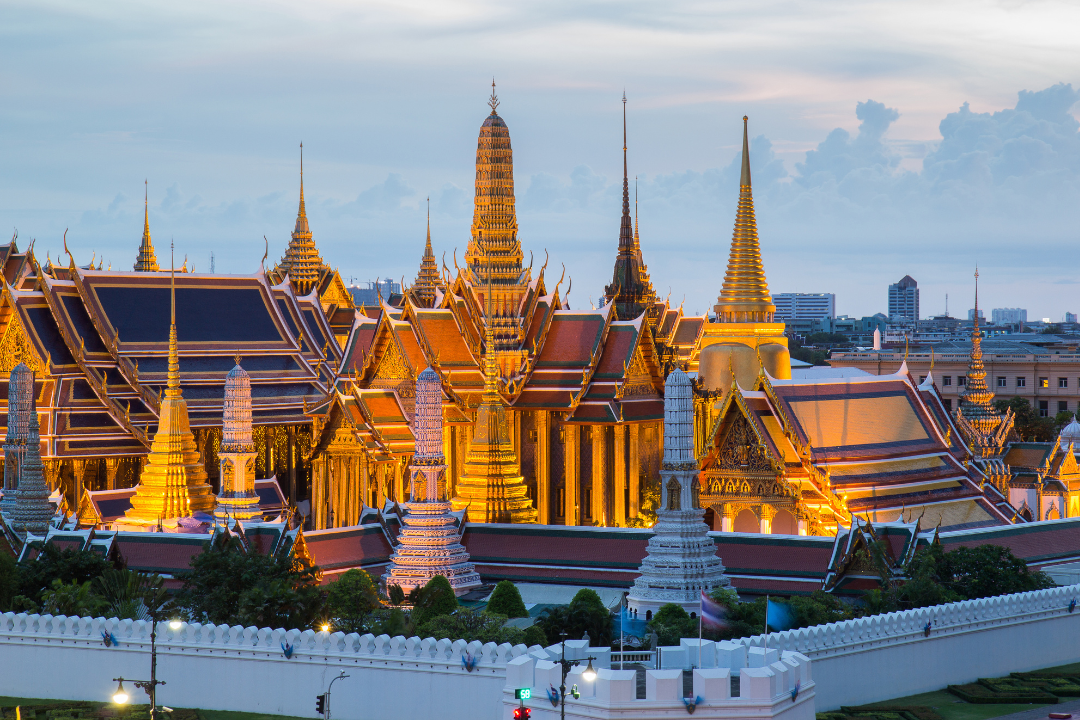
Temple of the Emerald Buddha (Wat Phra Kaew)
This temple houses the figurine of the meditating Buddha, carved from a single block of jade.
The statue is small yet revered, representing the auspicious characteristics of the Buddha such as peace and protection. Visitors can also view murals depicting the Ramakien, Thailand’s national epic, and beautifully painted walls illustrating tales of Buddhist teachings.
Queen Sirikit Museum of Textiles
Located in the vicinity of the Grand Palace, this museum honors Queen Sirikit and her commitment to preserving traditional Thai textiles.
Through a collection of costumes, jewelry, and fabrics, the museum highlights the craftsmanship of Thai artisans and the queen’s influence in reviving traditional textile arts. It’s a must-visit for those interested in the cultural and artistic heritage of Thailand.
Na Phra Lan Road
Just outside the palace, Na Phra Lan Road is bustling with local vendors selling crafts, textiles, and souvenirs, creating an authentic Thai market atmosphere.
This vibrant area provides visitors with a unique experience, offering an assortment of locally made goods that capture the colors and spirit of Thailand.
The Temple of the Emerald Buddha: A Jewel in the Crown
Inside the walls of the Grand Palace, you will find Wat Phra Kaew. This is the Temple of the Emerald Buddha and one of Thailand’s most important sites. Its shiny golden roof and detailed designs stand out.
The calm vibe makes many come to see the famous Emerald Buddha.
The Temple of the Emerald Buddha is not just a beautiful building. It is also a special place for the Thai people and their beliefs.
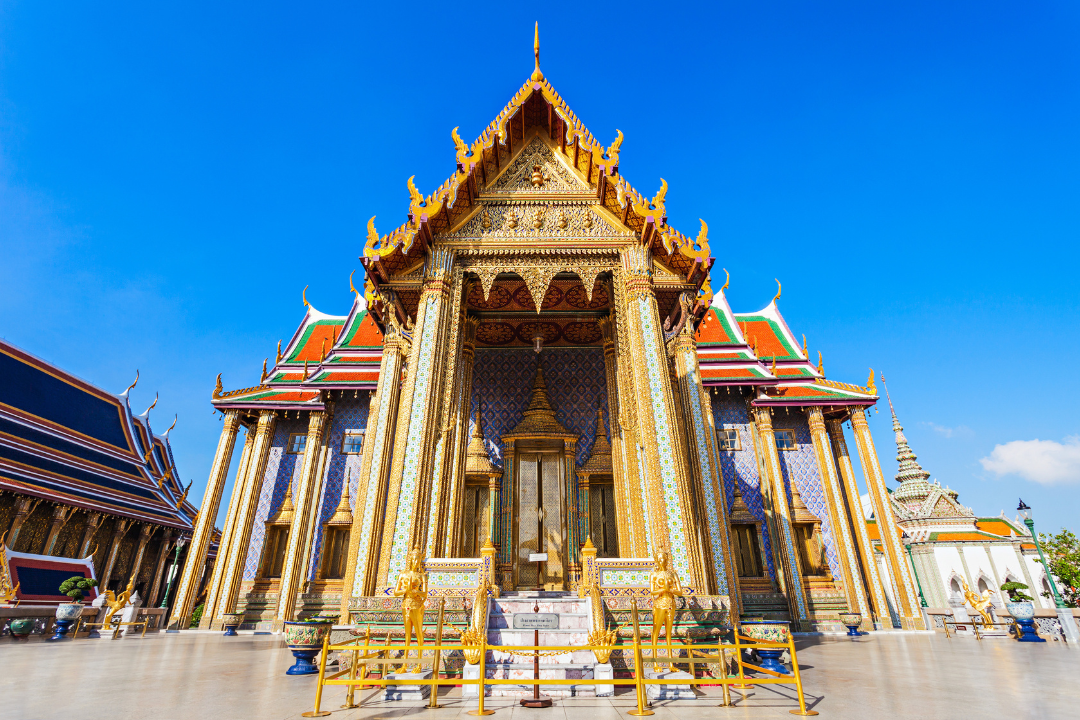
Unveiling the mystery of the Emerald Buddha
The Emerald Buddha, even though it has “emerald” in its name, is not made from emerald. This sacred statue of the meditating Buddha is carved from one piece of jade and dressed in beautiful gold clothing.
The stories about the Emerald Buddha are full of legends that add to its mystery.
People think the Emerald Buddha started in India. It was moved across Asia and reached Thailand in the 15th century. It now stays at Wat Phra Kaew, the most important Buddhist temple in Thailand.
Today, the Emerald Buddha stands for the Buddha’s complete spiritual enlightenment. It is a strong symbol of faith and attracts many pilgrims and visitors from around the world.
The significance of seasonal costume changes
One interesting tradition with the Emerald Buddha is the changing of its robes each season. Three times a year, during a special ceremony led by the King of Thailand, the Emerald Buddha gets dressed in new golden robes for each season.
These robes are full of beautiful designs made with gold and precious stones. They represent the good qualities of the Buddha. Changing the robes shows important times in the Buddhist calendar.
The ceremony mixes faith and royal traditions. It shows how much respect people have for the Emerald Buddha.
Exploring Additional Cultural Highlights
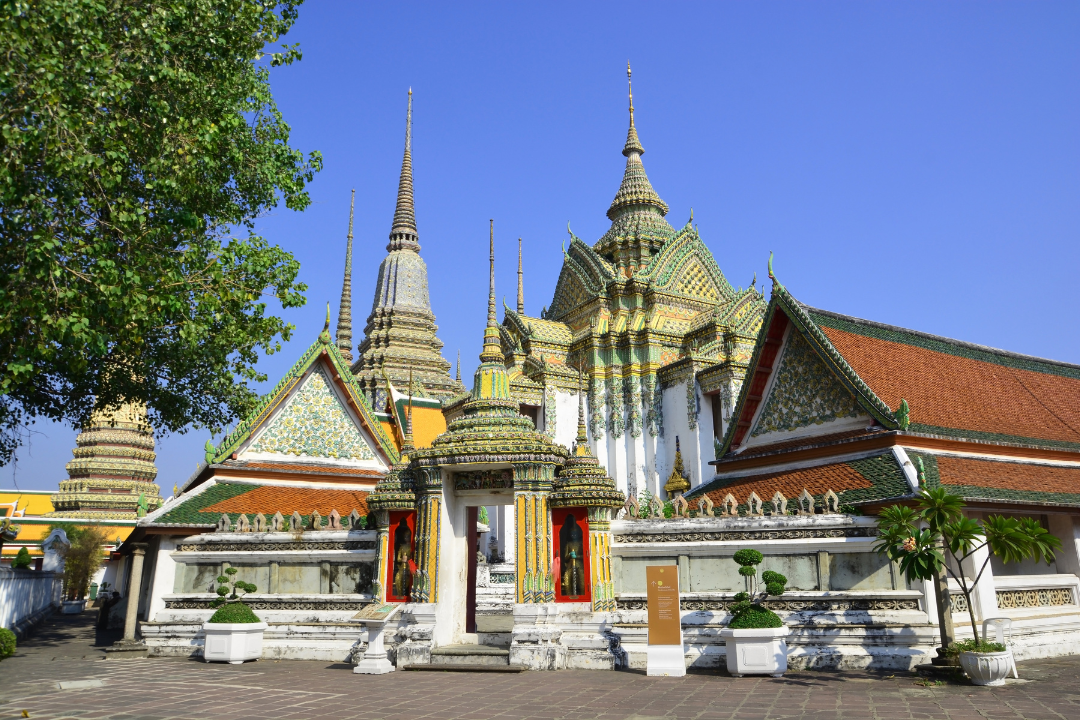
In addition to the main attractions, visitors to the Grand Palace can enjoy several nearby historical sites and vibrant cultural spots.
Chao Phraya River
Flowing along the western edge of the palace grounds, the Chao Phraya is often called the “River of Kings” and has historically played a crucial role in Thailand’s commerce and culture.
Visitors can take a river cruise to enjoy views of Bangkok’s skyline, including landmarks like the Grand Palace and Wat Arun.
Wat Pho (Temple of the Reclining Buddha)
Just south of the Grand Palace, Wat Pho houses the impressive Reclining Buddha statue, a 46-meter-long figure symbolizing enlightenment.
Wat Pho is also known as the birthplace of traditional Thai massage and offers wellness experiences in keeping with this ancient practice.
Bronze Bowls and Souvenirs
Various parts of the palace grounds and nearby markets offer handmade bronze bowls, traditional Thai crafts, and other souvenirs.
These items are more than keepsakes—they represent Thailand’s rich artisanal heritage, a craft passed down through generations.
Seeking a travel adventure that truly makes a difference? At our elephant sanctuary, we offer more than just a tour, it’s a unique chance to bond with nature and contribute to vital wildlife conservation efforts.
The Grand Palace is a must-see—especially with someone who knows its secrets.
Explore with a private guide and smooth itinerary tailored to you.
→ Let’s plan your visit on WhatsApp
Conclusion
Visiting the Grand Palace in Bangkok feels like entering a place full of rich history and amazing buildings. You can explore the history within its walls, from the impressive Outer, Middle, and Inner Courts to the sacred feeling of the Temple of the Emerald Buddha.
You will also see the beautiful seasonal costume changes on the well-regarded Emerald Buddha. For a great visit, plan your time, follow the dress code, and check out important spots.
Enjoy the beauty of this cultural wonder and let it impress you. Your time at the Grand Palace will be a memorable trip into Thailand’s royal history.
Frequently Asked Questions
What is the best time to visit the Grand Palace?
The Grand Palace is open all year. You should visit during special events or festivals to enjoy Thai culture fully. The best time to explore the Grand Palace is between November and February.
The weather is cooler then, making it more comfortable to walk around the grounds of the Grand Palace.
Are there dress code requirements for visitors?
Visitors to the Grand Palace, a respected site and former royal home, must follow a strict dress code. You should dress modestly, covering your shoulders and knees. This rule is for both men and women.
It also applies to other important public buildings and royal offices in Thailand.
Can you buy tickets to the Grand Palace online?
Visitors can buy Grand Palace tickets online to skip long lines, especially during busy times. It’s important to check the official website before your visit. The Grand Palace may be close to the public or have shorter hours on some days because of official events.
So, always look for updates on the website.
What are some must-see attractions within the Grand Palace?
Wat Phra Kaew, where the Emerald Buddha is located, is a must-see. Also, you should check out the amazing Grand Palace Hall. Be sure to look at the detailed murals and the beautiful throne rooms.
The overall splendor of the Royal Grand Palace is something you will not want to miss.
Tips for a seamless visit: Avoiding crowds and staying hydrated
To stay away from big crowds, come early in the morning. Try to visit on weekdays if you can. Bring a refillable water bottle since you will find water stations in the Grand Palace complex. Enjoy the open lawns and spaces as you walk around.
Take pleasure in the shade of the trees while exploring each architectural wonder of the Grand Palace.

